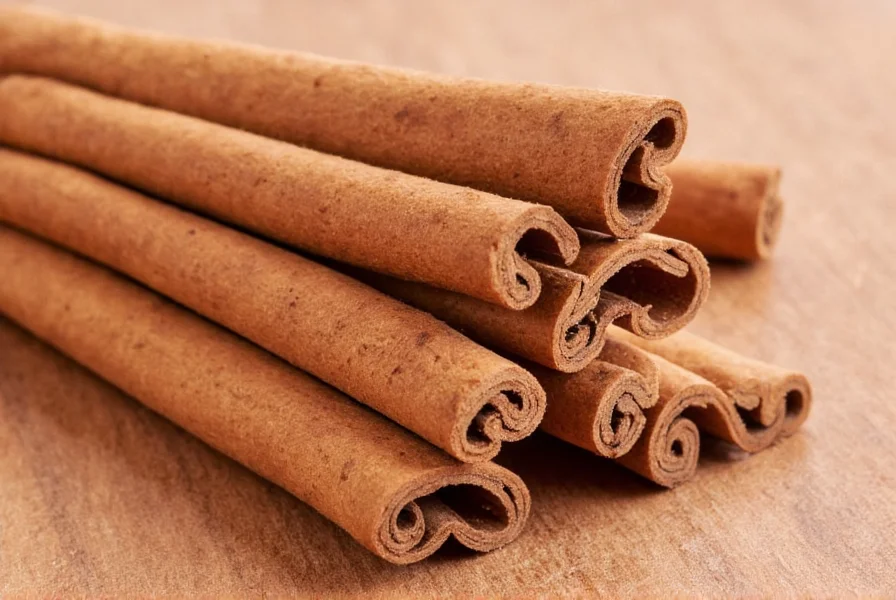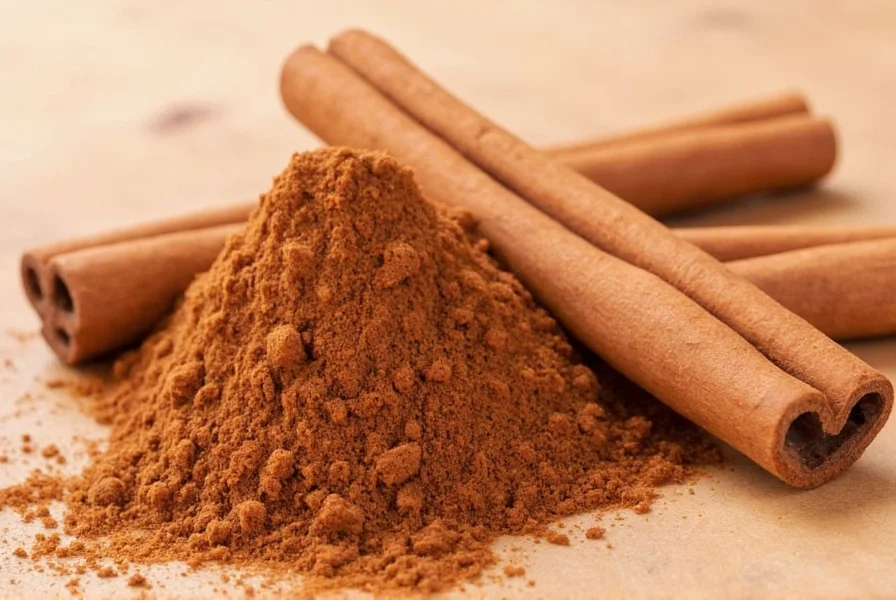Cinnamon isn't just a flavorful spice—it packs a nutritional punch that makes it valuable beyond its culinary uses. This ancient spice, harvested from the inner bark of Cinnamomum trees, contains bioactive compounds that contribute to both its distinctive taste and potential health benefits. Understanding the complete nutritional value in cinnamon helps consumers make informed decisions about incorporating this spice into their diets.
The nutritional profile of cinnamon varies slightly between varieties, with Ceylon cinnamon (Cinnamomum verum) and Cassia cinnamon (Cinnamomum cassia) being the most common types available. While both offer similar nutritional benefits, they differ in certain compound concentrations, particularly regarding coumarin content, which affects recommended consumption levels.
| Nutrient | Per Teaspoon (2.6g) | % Daily Value* |
|---|---|---|
| Calories | 1.9 | 0.1% |
| Total Fat | 0.1g | 0.1% |
| Carbohydrates | 0.6g | 0.2% |
| Dietary Fiber | 0.3g | 1.1% |
| Sugar | 0.0g | 0% |
| Protein | 0.1g | 0.1% |
| Manganese | 0.3mg | 16% |
| Calcium | 26.1mg | 2% |
| Iron | 0.2mg | 1% |
*Percent Daily Values are based on a 2,000 calorie diet. Your daily values may be higher or lower depending on your calorie needs.
The standout nutrient in cinnamon is manganese, with just one teaspoon providing approximately 16% of the recommended daily intake. This essential mineral plays crucial roles in bone formation, metabolism regulation, and antioxidant function. The calcium content in cinnamon, while modest, contributes to bone health, while the dietary fiber supports digestive wellness.
What makes cinnamon particularly interesting from a nutritional perspective is its rich array of bioactive compounds. Cinnamon contains cinnamaldehyde (responsible for its distinctive flavor and aroma), along with significant amounts of polyphenol antioxidants. These compounds give cinnamon one of the highest antioxidant capacities among common spices, potentially helping to combat oxidative stress in the body.
Research on the nutritional value of cinnamon per tablespoon suggests that larger servings provide more substantial nutrient contributions, though consumption should be moderated due to coumarin content in certain varieties. Cassia cinnamon contains higher levels of coumarin, a compound that in excessive amounts may cause liver issues in sensitive individuals. Ceylon cinnamon, sometimes called "true cinnamon," contains significantly less coumarin, making it a better choice for regular consumption.

When considering how much cinnamon should you eat daily, most experts recommend limiting Cassia cinnamon to about 1 teaspoon (2-4 grams) per day for regular consumption. Ceylon cinnamon can be consumed in slightly larger amounts due to its lower coumarin content. The nutritional benefits of cinnamon spice become most apparent when incorporated consistently into a balanced diet rather than consumed sporadically in large quantities.
Studies examining cinnamon vitamins and minerals content have revealed potential connections between cinnamon consumption and improved blood sugar regulation. The spice appears to enhance insulin sensitivity and may help moderate post-meal blood glucose spikes, making it potentially valuable for individuals managing blood sugar levels. However, these effects should be viewed as complementary to, not a replacement for, established medical treatments.
The antioxidant properties of cinnamon extend beyond simple nutrient content. Research published in the Journal of Agricultural and Food Chemistry found that cinnamon ranked seventh among 26 spices tested for total antioxidant capacity, outperforming well-known antioxidant sources like garlic and oregano. These antioxidants may contribute to cinnamon's potential anti-inflammatory effects, which could benefit overall health when consumed as part of a varied diet.

When incorporating cinnamon into your diet, consider both the culinary applications and nutritional value. Sprinkling cinnamon on oatmeal, adding it to smoothies, or using it in savory dishes like Moroccan tagines can enhance flavor while contributing valuable nutrients. The spice blends well with fruits, nuts, and dairy alternatives, making it versatile for both sweet and savory applications.
Understanding the complete nutritional profile of cinnamon helps consumers make informed choices about which variety to purchase and how to use it effectively. While both Ceylon and Cassia offer similar flavor profiles and nutritional benefits, those consuming cinnamon regularly might prefer Ceylon for its lower coumarin content. Reading labels carefully can help identify which variety you're purchasing, as many products simply list "cinnamon" without specifying the type.
The nutritional value in cinnamon makes it more than just a flavor enhancer—it's a functional food with potential health-promoting properties. By understanding both the benefits and limitations of this ancient spice, consumers can make informed decisions about incorporating it into their dietary patterns for maximum benefit.
What are the key nutrients found in cinnamon?
Cinnamon's most significant nutrient is manganese, with one teaspoon providing about 16% of the daily recommended intake. It also contains notable amounts of calcium, iron, and dietary fiber. Additionally, cinnamon contains bioactive compounds like cinnamaldehyde and polyphenol antioxidants that contribute to its health properties beyond basic nutrition.
How does Ceylon cinnamon differ nutritionally from Cassia cinnamon?
Both varieties have similar nutritional profiles in terms of vitamins, minerals, and antioxidants. The primary difference is in coumarin content—Cassia cinnamon contains significantly higher levels (up to 1% by weight) compared to Ceylon cinnamon (only about 0.004%). This makes Ceylon safer for regular consumption in larger amounts, while Cassia should be limited to about 1 teaspoon daily for most adults.
Can cinnamon help regulate blood sugar levels?
Research suggests cinnamon may help improve insulin sensitivity and moderate post-meal blood glucose spikes. Multiple studies have shown modest improvements in blood sugar markers, particularly in people with type 2 diabetes. However, these effects should be viewed as complementary to, not a replacement for, established diabetes management approaches and medical treatments.
What is the recommended daily amount of cinnamon?
For Cassia cinnamon, most experts recommend limiting intake to 1 teaspoon (2-4 grams) per day due to its higher coumarin content. Ceylon cinnamon, which contains significantly less coumarin, can be consumed in slightly larger amounts—up to 1-2 teaspoons daily. People with liver conditions or those taking medications metabolized by the liver should consult their healthcare provider before regular cinnamon consumption.
Does the nutritional value of cinnamon change when cooked?
Most of cinnamon's key nutrients and bioactive compounds remain stable during cooking. The manganese, calcium, and fiber content remains consistent whether cinnamon is used in raw or cooked applications. Some volatile compounds like cinnamaldehyde may decrease slightly with prolonged high-heat cooking, but the overall nutritional profile remains largely intact. For maximum antioxidant retention, adding cinnamon toward the end of the cooking process may be beneficial.











 浙公网安备
33010002000092号
浙公网安备
33010002000092号 浙B2-20120091-4
浙B2-20120091-4